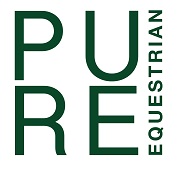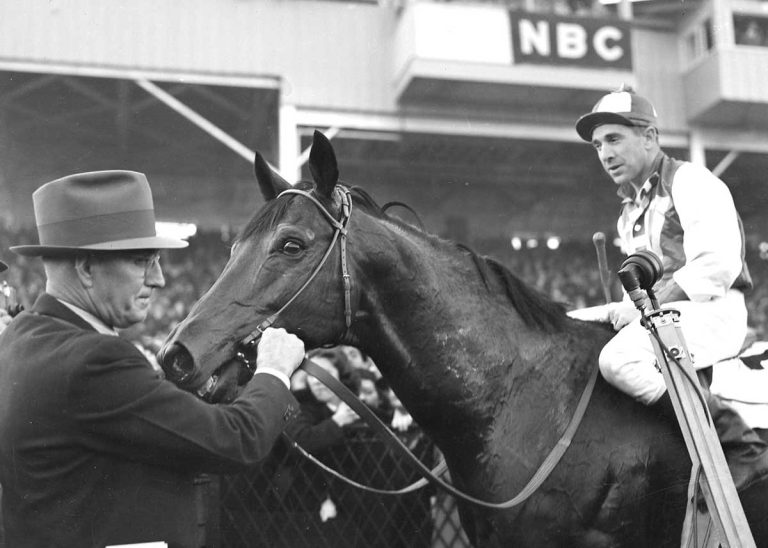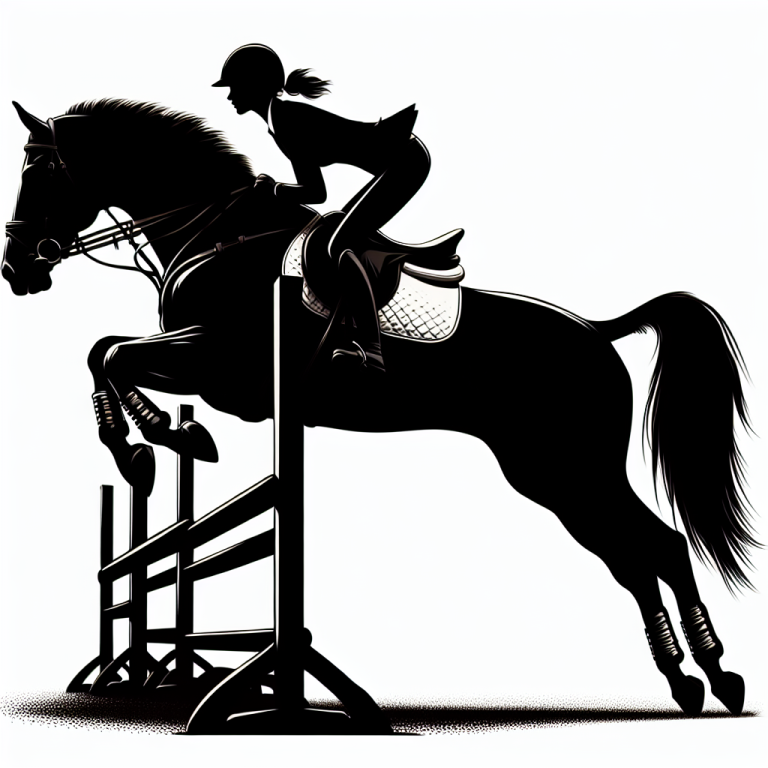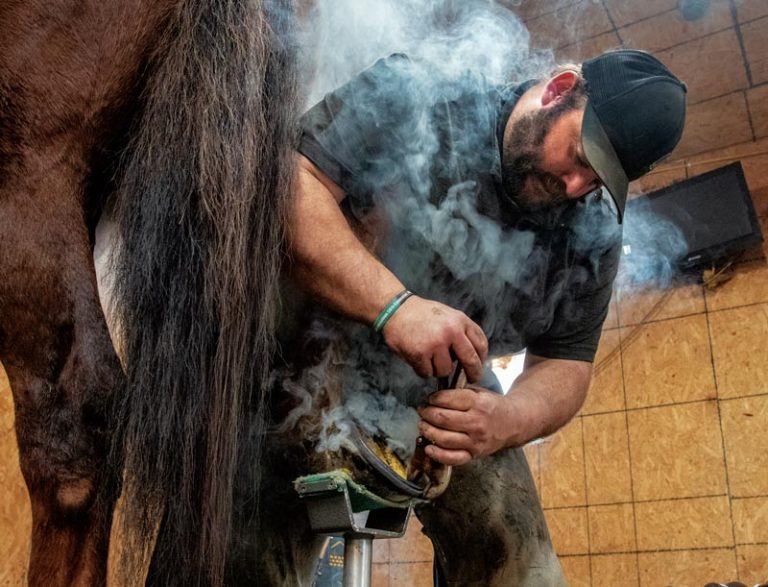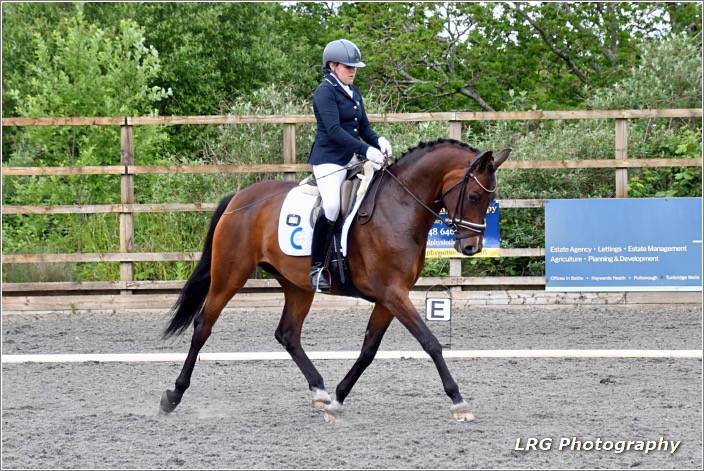In a fast-paced and exhilarating showjumping competition, strategy takes centre stage as riders and their horses navigate their way through a challenging course of carefully positioned jumps and obstacles. It is the art of making split-second decisions, carefully planning the approach, speed, and angles to ensure a successful round. The role of strategy in showjumping is crucial, as it allows riders to not only showcase their skills and technique but also outsmart their competitors and make the most of their horse’s abilities. It is the delicate balance between precision and adaptability that can ultimately make or break a rider’s performance in this high-stakes sport.
Table of Contents
ToggleUnderstanding Showjumping
Definition of showjumping
Showjumping is a competitive equestrian sport that involves horse and rider partnerships navigating a series of jumps set up on a designated course. The objective of showjumping is to clear the obstacles cleanly and in the fastest time possible, while also showcasing the horse’s athleticism, technique, and the rider’s skill in controlling the horse. It is a thrilling and visually spectacular sport that requires careful planning, precise execution, and strategic decision-making on the part of the rider.
Basic rules and objectives
In showjumping, the rider and horse are required to complete a course consisting of various jumps, which can include verticals, oxers, combinations, and water jumps, among others. The objective is to clear the jumps without knocking down any poles or refusing to jump, while also staying within the designated time allowed for the course. Penalties are given for faults such as knocking down rails, refusals, or exceeding the time limit. The rider with the fewest penalties and the fastest time is the winner. Strategy plays a crucial role in showjumping to maximise the horse’s capabilities, enhance performance, and achieve efficient time management.
The Importance of Strategy in Showjumping
Enhancing performance
A well-thought-out strategy is essential in showjumping, as it allows the rider to enhance their performance. By analysing the course and planning ahead, the rider can determine the best approach to each jump, making quick and effective decisions during the ride. A strategic approach helps the rider maintain focus and minimise mistakes, leading to a smoother and more successful performance.
Maximizing horse’s capabilities
Showjumping is a partnership between the rider and the horse. A good strategy takes into account the strengths and weaknesses of the horse, allowing the rider to make informed decisions on the most suitable jumping techniques and positioning for each obstacle. By understanding the horse’s capabilities and tailoring the strategy accordingly, the rider can maximise the horse’s potential and ensure a strong and confident performance.
Achieving efficient time management
Time is a crucial factor in showjumping. With a strategic approach, the rider can analyse the course layout, identifying areas where time can be gained or lost. By determining optimal speed control and negotiating tight turns efficiently, the rider can shave off valuable seconds from their total time. Managing the allotted time effectively through a well-planned strategy can make a significant difference in the overall performance and placement in the competition.
Elements of an Effective Showjumping Strategy
Course analysis and planning
One of the core elements of a successful showjumping strategy is the analysis and planning of the course. The rider must carefully evaluate the course design, taking note of the placement and difficulty of the jumps, as well as any related factors such as turns, straights, and combinations. By understanding the course, the rider can develop a plan of action that considers the strengths of their horse and eliminates potential pitfalls.
Strategic use of horse’s gaits
Each horse has a unique set of gaits, including the walk, trot, canter, and gallop. A successful strategy involves understanding the different gaits and how they can be utilised to tackle various jumps and course requirements. By analysing the course demands, the rider can determine which gait will allow the horse to maintain balance, rhythm, and power to clear the jumps efficiently. Strategic use of the horse’s gaits can significantly impact the overall performance.
Jumping techniques and positioning
Showjumping requires the rider to approach different types of jumps, such as verticals and oxers, with precision. An effective strategy involves mastering jumping techniques and positioning the horse correctly for takeoff and landing. Understanding striding and distances between jumps enables the rider to adjust stride lengths to meet the requirements of the course. By executing proper techniques and positioning, the rider can increase the chances of clearing the jumps cleanly and efficiently.
Optimal speed control
Finding the right balance between speed and accuracy is a crucial aspect of showjumping strategy. The rider must analyse the time allowed for the course and determine an efficient speed that allows them to clear the jumps within the given time frame. Additionally, strategic speed control involves negotiating tight turns and combinations smoothly, ensuring the horse maintains its balance and power throughout the ride. A well-managed speed not only reduces penalties but also improves the overall fluidity and effectiveness of the performance.
Effective use of aids and cues
Clear and precise communication between the rider and the horse is vital in a successful showjumping strategy. The rider must understand the timing and placement of aids and cues, such as leg pressure, rein aids, and voice commands, to guide the horse through the course. Effective use of aids and cues encourages impulsion and responsiveness from the horse, allowing for smoother transitions, accurate jumping, and quick adjustments in case of unexpected challenges. A strategic approach ensures effective communication and coordination, leading to a more seamless and harmonious ride.
Course Analysis and Planning
Evaluating course design
The first step in an effective showjumping strategy is to evaluate the course design. This involves carefully studying the layout of the jumps, the sequence of obstacles, and any related factors like turns, straights, and distances between jumps. By understanding the course design, the rider can anticipate the challenges that lie ahead and develop a plan to tackle them efficiently.
Identifying challenging obstacles
Not all jumps are created equal in terms of difficulty. Certain jumps may be more technically demanding or require specific skills from both the horse and the rider. A critical aspect of course analysis is identifying these challenging obstacles. By recognising the jumps that might pose difficulties, the rider can focus on perfecting the necessary techniques and adjusting their strategy accordingly.
Analysing track patterns
The track pattern refers to the path the horse and rider take throughout the course. Analysing the various track patterns allows the rider to determine the most efficient routes to take from one jump to the next. By identifying the optimal track patterns, the rider can minimise unnecessary movements and save valuable time during the ride. Additionally, understanding the track patterns helps the rider plan for smooth transitions between jumps and maintain the horse’s balance and rhythm.
Developing a plan of action
Once the course has been thoroughly evaluated, and the challenging obstacles and track patterns have been identified, it’s time to develop a plan of action. This includes determining the order in which jumps will be tackled, selecting the appropriate gaits for each jump, and visualising the ideal execution of the ride. A well-developed plan of action sets the foundation for a successful strategy by providing a clear roadmap for the rider to follow during the competition.
Strategic Use of Horse’s Gaits
Understanding different gaits
To effectively utilise the horse’s gaits in showjumping, the rider must have a deep understanding of each gait. The walk, trot, canter, and gallop each offer unique advantages and challenges for navigating jumps. The walk is a slow and controlled gait that can be useful for precise positioning and gathering focus before a jump. The trot is a rhythmic and forward-moving gait that allows the rider to maintain balance while approaching and landing from jumps. The canter is a three-beat gait that offers more impulsion and power, ideal for clearing larger and more challenging jumps. The gallop is the fastest gait and is typically used for long runs between jumps or during timed rounds.
Analysing the course demands
Once the course has been evaluated, it’s important to analyse the specific demands of each jump and the overall course design. Some jumps may require a slower, more collected gait for accuracy, while others may benefit from a more forward and powerful gait to clear the obstacle effectively. By understanding the course demands, the rider can determine which gait will best suit the requirements of each jump and create a strategy that maximises the horse’s capabilities.
Choosing appropriate gaits
Based on the analysis of the course demands, the rider must make informed decisions regarding the appropriate gaits to utilise for each jump. A successful strategy involves selecting the gait that allows the horse to maintain balance, rhythm, and power while also meeting the technical requirements of the jump. The rider must consider the horse’s abilities and preferences, as well as their own riding skills, to make the best choice for each specific jump.
Maintaining balance and rhythm
Regardless of the chosen gait, maintaining balance and rhythm is crucial in showjumping. A good strategy involves understanding how the horse’s movement and body position affect their balance and rhythm. By keeping the horse balanced and maintaining a steady rhythm throughout the ride, the rider can ensure smooth and successful jumps. Strategic use of the horse’s gaits, combined with good balance and rhythm, helps optimise the overall performance and increase the chances of a clear round.
Jumping Techniques and Positioning
Approaching various types of jumps
In showjumping, there are various types of jumps that require different techniques and positioning from the rider and horse. Vertical jumps consist of single poles, while oxers are wider, using two or more poles set slightly apart. Combinations involve multiple jumps in close proximity, requiring precise timing and balance. Water jumps, ascending fences, and other complex obstacles also require specific approaches. A strategic approach involves mastering the techniques and positioning required for each type of jump, considering the horse’s stride length, takeoff and landing points, and the overall course layout.
Positioning for optimal takeoff and landing
Proper positioning of the horse is pivotal for achieving optimal takeoff and landing over a jump. A good strategy involves preparing the horse for the jump by maintaining a balanced and straight approach. As the horse takes off, the rider must adjust their body position to allow the horse to lift its front end and use its hindquarters efficiently. The landing position is equally essential, as the rider needs to maintain balance and prepare for the subsequent jump or transition. Strategic positioning ensures effective jumps and minimises the risk of faults or refusals.
Understanding striding and distances
Striding refers to the number of strides taken by the horse between two jumps or elements of a combination. Understanding striding and distances is crucial for a successful showjumping strategy. The rider must analyse the course and calculate the appropriate number of strides required to navigate combinations or related lines. By adjusting the horse’s stride length and approaching the correct distance, the rider can ensure smooth and balanced jumps, minimising the risk of knocking down rails or making mistakes in the course.
Adjusting stride lengths
Different jumps and combinations may require adjustments in stride lengths to meet the technical requirements of the course. A strategic rider must be able to adjust the horse’s stride length to achieve the optimal approach and clearance over each jump. This can include lengthening or shortening the stride, depending on the obstacle and the overall course design. By mastering the ability to adjust stride lengths, the rider can effectively navigate challenging courses and optimise their performance.
Optimal Speed Control
Analysing course time allowed
The time allowed for completing a showjumping course can vary depending on the class or competition level. Analysing the course time allowed is crucial for developing a strategic plan. The rider must understand the required pace, taking into account the number of jumps, track patterns, and other related factors. By analysing the time allowed, the rider can determine the necessary speed for completing the course within the given time frame.
Determining efficient speed
Efficient speed control is an essential aspect of showjumping strategy. The rider must carefully manage the horse’s speed throughout the course, finding the right balance between going fast enough to meet the time requirements and maintaining control over the horse. By determining the most efficient speed for the specific course, the rider can avoid penalties for exceeding the time limit while ensuring a smooth and accurate performance.
Balancing speed and accuracy
Showjumping is not only about clearing the jumps but also about doing so accurately. A successful strategy involves balancing speed and accuracy. While it may be tempting to push the horse to go faster, it’s important to maintain control and accuracy over the jumps. By finding the optimal balance between speed and accuracy, the rider can reduce penalties for faults and increase the chances of a clear round. Strategic speed control ensures a strong performance without sacrificing precision.
Negotiating tight turns and combinations
Tight turns and combinations pose unique challenges in showjumping. Negotiating these elements efficiently is an important part of a successful strategy. The rider must analyse the turning radius and adjust the horse’s speed and balance accordingly. By planning ahead and visualising the best approach, the rider can navigate tight turns smoothly, saving valuable time and maintaining the horse’s rhythm and impulsion. Strategic negotiation of tight turns and combinations can be a differentiating factor in the overall performance.
Effective Use of Aids and Cues
Clear communication with the horse
Clear communication between the rider and the horse is fundamental in showjumping. An effective strategy involves establishing a clear line of communication using aids and cues. The rider must develop a consistent and reliable method of communication, ensuring that the horse understands the desired actions. Clear aids and cues, such as leg pressure, rein aids, and voice commands, help the horse understand what is required of them and perform the desired actions with greater accuracy.
Timing of aids and cues
Timing is crucial in using aids and cues effectively. A well-planned showjumping strategy involves understanding the timing of aids and cues and using them at the most opportune moments. Proper timing helps the horse understand the rider’s instructions and respond promptly. By matching the aids and cues with the horse’s movements and the necessary adjustments for each jump, the rider can achieve better coordination and execution throughout the course.
Encouraging impulsion and responsiveness
A strategic rider aims to develop a partnership with the horse that encourages impulsion and responsiveness. Impulsion refers to the forward energy and power generated by the horse. A successful strategy involves using aids and cues to encourage impulsion, motivating the horse to jump with greater power and accuracy. Additionally, a responsive horse is essential for swift adjustments and quick reactions to unforeseen challenges. Through effective use of aids and cues, the rider can cultivate a responsive and impulsive partnership, enhancing the overall performance.
Reacting to unforeseen challenges
Showjumping courses can present unexpected challenges, such as a horse refusing a jump or a difficult line approaching a combination. A strategic rider must be prepared to react quickly and adapt the strategy on the spot. By maintaining focus, staying calm, and relying on the established communication with the horse, the rider can make split-second decisions to overcome these challenges. Flexibility and quick thinking are crucial elements of a successful showjumping strategy.
Mental Preparation and Decision Making
Visualisation techniques
Mental preparation is a key component of a showjumping strategy. Visualisation techniques help the rider mentally rehearse the ride, creating a clear and vivid picture of themselves successfully navigating the course. By visualising the techniques, movements, and challenges, the rider can mentally prepare for the ride, build confidence, and increase focus. Visualisation techniques play a vital role in improving decision-making and enhancing performance.
Developing a pre-competition routine
Establishing a pre-competition routine contributes to mental preparation and decision-making. A routine helps create a sense of familiarity and comfort for the rider, reducing anxiety and increasing focus. A strategic rider develops a pre-competition routine that includes warm-up exercises, mental preparation techniques, and physical exercises to prepare both the rider and the horse for the upcoming competition. By following a consistent routine, the rider can enter the competition with a clear mind and confident demeanour.
Adapting strategies during the ride
Despite careful planning and preparation, showjumping courses can be unpredictable. A successful strategy involves the ability to adapt and make decisions on the go. During the ride, the rider must continuously assess the horse’s performance, the course conditions, and any unforeseen challenges that arise. By adapting the strategy as needed, the rider can overcome obstacles, make necessary adjustments, and ensure a successful performance.
Analysing and learning from mistakes
Mistakes on the course are valuable learning opportunities. A strategic rider acknowledges and analyses their mistakes to grow and improve. After a competition, it is essential to reflect on both successful and unsuccessful performances, identifying areas for improvement and adjusting the strategy for future competitions. Analysing and learning from mistakes is a crucial part of a showjumping strategy that allows the rider to continually evolve and develop as an athlete.
Conclusion
Strategy plays a fundamental role in showjumping. A well-developed and executed strategy enhances performance, maximises the horse’s capabilities, and enables efficient time management. Course analysis and planning, strategic use of horse’s gaits, jumping techniques and positioning, optimal speed control, effective use of aids and cues, mental preparation and decision-making are all integral elements of a successful showjumping strategy. By implementing these strategies in a comprehensive and thoughtful manner, riders can elevate their showjumping performance and achieve success in the exciting and exhilarating world of showjumping.
